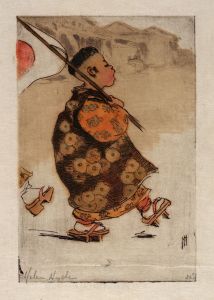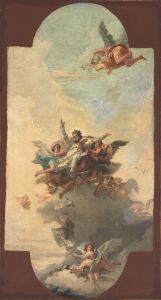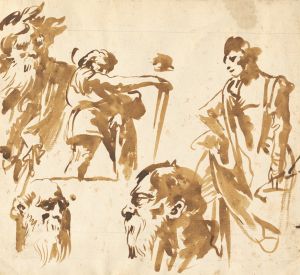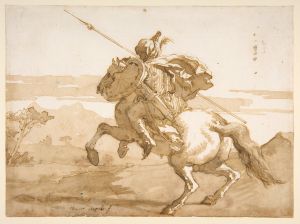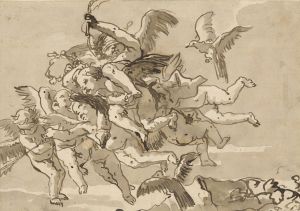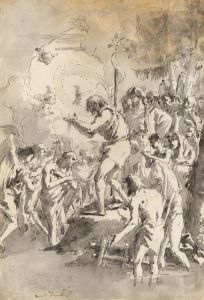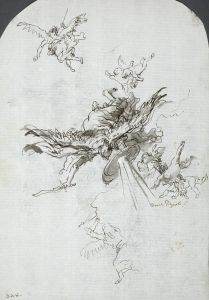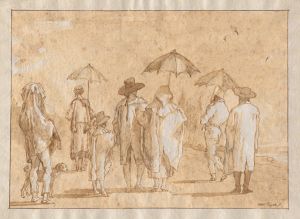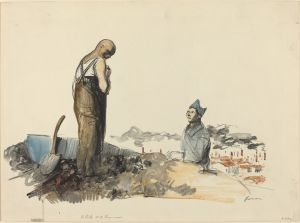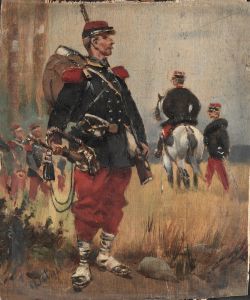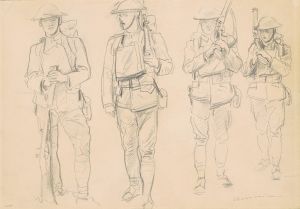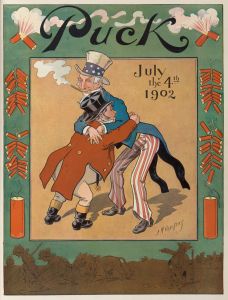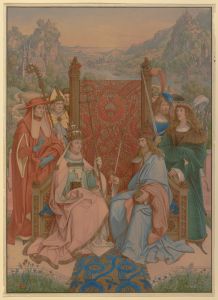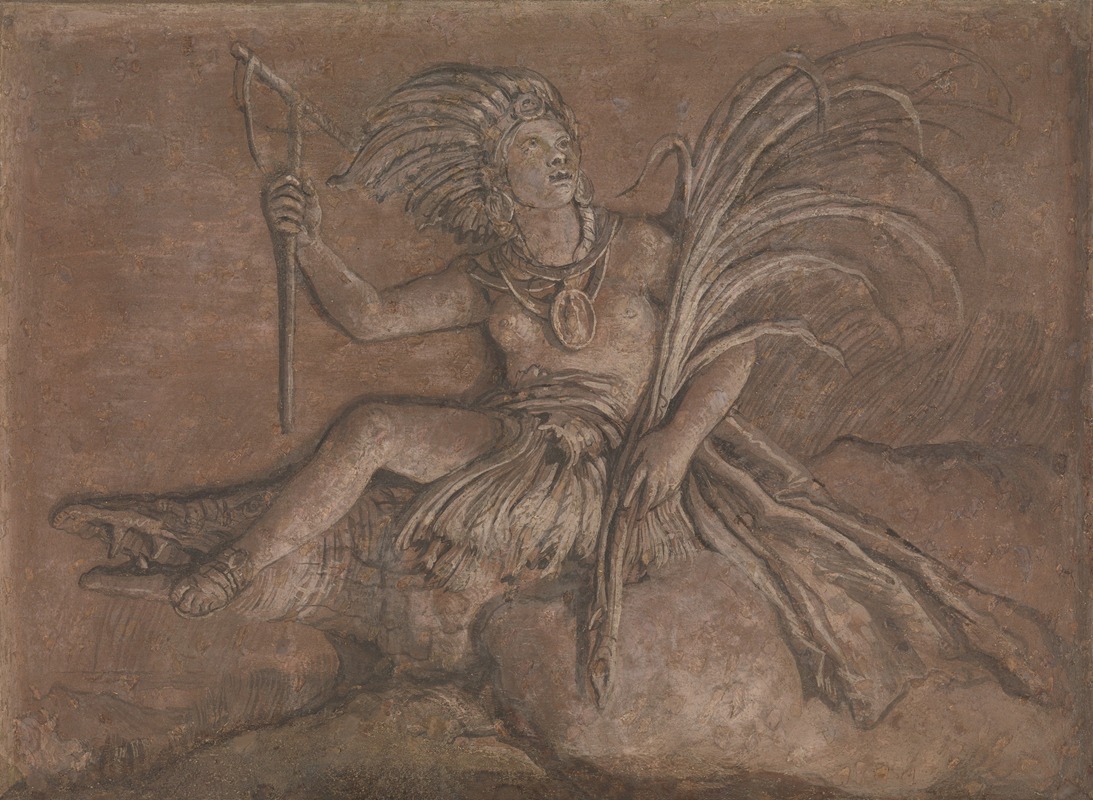
Allegorical Figure Representing America
A hand-painted replica of Giovanni Domenico Tiepolo’s masterpiece Allegorical Figure Representing America, meticulously crafted by professional artists to capture the true essence of the original. Each piece is created with museum-quality canvas and rare mineral pigments, carefully painted by experienced artists with delicate brushstrokes and rich, layered colors to perfectly recreate the texture of the original artwork. Unlike machine-printed reproductions, this hand-painted version brings the painting to life, infused with the artist’s emotions and skill in every stroke. Whether for personal collection or home decoration, it instantly elevates the artistic atmosphere of any space.
Giovanni Domenico Tiepolo, an Italian painter and printmaker, was a prominent figure in the 18th-century Venetian art scene. He was the son of the renowned artist Giovanni Battista Tiepolo and followed in his father's footsteps, contributing significantly to the Rococo movement. One of his notable works is the "Allegorical Figure Representing America," which is part of a series of paintings depicting the four continents, a popular theme during the period.
The painting "Allegorical Figure Representing America" is an embodiment of the European fascination with the New World during the 18th century. This artwork is part of a larger tradition where continents were personified as female figures, each representing the perceived characteristics and exoticism of the lands they symbolized. In Tiepolo's depiction, America is often portrayed with attributes that Europeans associated with the continent, such as indigenous people, exotic animals, and lush landscapes.
Tiepolo's representation of America typically includes a female figure adorned with feathers and accompanied by symbols like parrots or other animals native to the Americas. This portrayal reflects the European perspective of America as a land of untamed nature and rich resources. The figure might be shown holding a cornucopia, symbolizing the abundance and fertility of the continent. Such allegorical representations were not intended to be accurate depictions but rather imaginative interpretations that conveyed the mystique and allure of distant lands.
The painting is characterized by Tiepolo's masterful use of color and light, hallmarks of his style that he inherited from his father. His ability to create dynamic compositions and his skillful rendering of textures and details are evident in this work. The allegorical figure is often set against a backdrop that suggests a tropical environment, enhancing the exotic theme.
Giovanni Domenico Tiepolo's work, including the "Allegorical Figure Representing America," reflects the broader cultural and artistic trends of his time. During the 18th century, there was a growing interest in exploration and the documentation of newly discovered lands. Artists like Tiepolo played a crucial role in shaping the European imagination of these territories through their art.
While specific details about the painting's commission or its original location might not be well-documented, it is known that Tiepolo's works were highly sought after by patrons across Europe. His paintings adorned the walls of palaces and churches, and his allegorical series would have been appreciated for both their aesthetic beauty and their intellectual engagement with contemporary themes.
In summary, Giovanni Domenico Tiepolo's "Allegorical Figure Representing America" is a significant example of 18th-century European art that captures the era's fascination with the New World. Through his allegorical depiction, Tiepolo contributed to the visual narrative of America as a land of wonder and opportunity, a theme that resonated with the curiosity and aspirations of his contemporaries.





